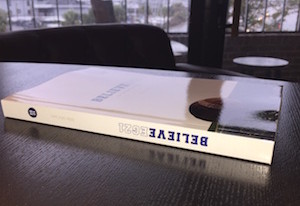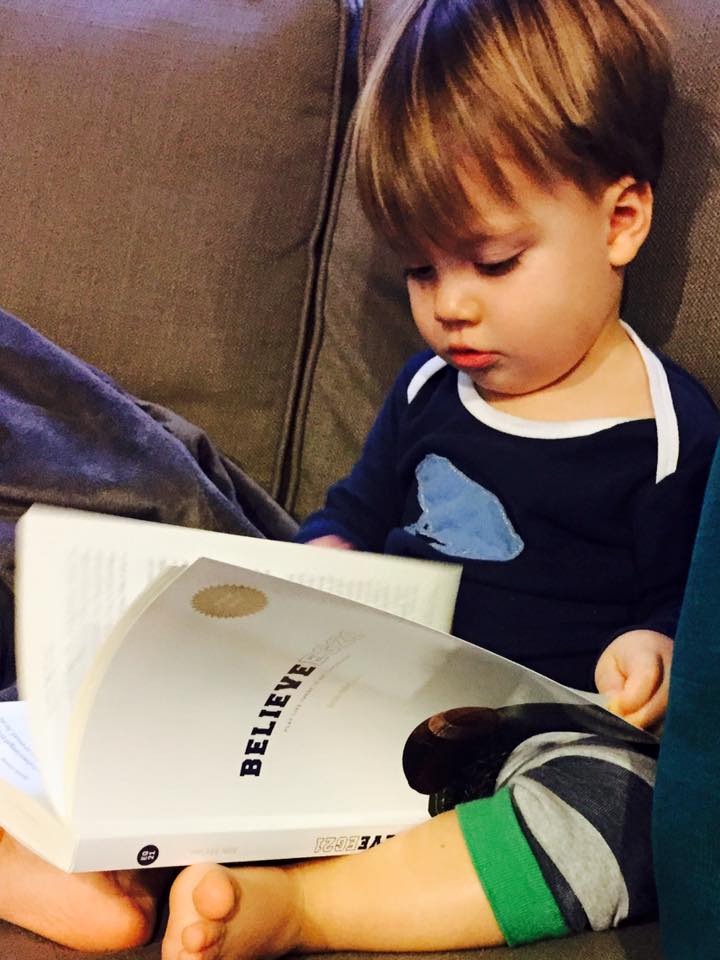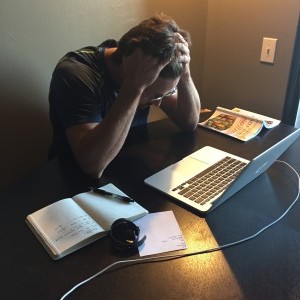I recently completed my first book. I refer to this experience as “a journey” with anyone who is polite enough to ask. I started the journey two+ years ago and I’ve grown tremendously during that time.
“The impulse to keep to yourself what you have learned is not only shameful, it is destructive. Anything you do not give freely and abundantly becomes lost to you. You open your safe and find ashes.”
– Annie Dillard
After reading this quote (in Austin Kleon’s Show Your Work!) I knew I had to share my findings as soon my fingers were no longer tasked with typing the story.
Over the last two years I learned how to build a life that allows me to write, how to bring out my best creativity and so much more. I learned something every day I sat down to work on the book. Since I don’t want these lessons to turn into my second book, these are a few of the most painful self-publishing mistakes I made along the way. Since I know many people in my audience haven’t published a book, I have paired these lessons with applications outside of the publishing realm.
1) The Story Picks You – You Don’t Pick The Story
Translation: I originally mapped out this story thinking it would be a business book. I would use the lessons I’ve learned from my football experiences as a central theme and apply them to the world of business. This plan lasted roughly three months before I scrapped it.
I planned for this book before I began writing. I mapped out the storyline, I studied archives, and I did extensive interviews. What I couldn’t account for was the story itself. A work of art, as most artists will tell you, does not belong to the artist. The artist is the medium out of which the work springs. The story was there the whole time; I just happened to be the one who polished it off.
Application: Mike Tyson is famously quoted as saying, “Everyone has a plan until they get punched in the face.” This book punched me in the face. And the gut. And then the face a few more times. I had to adjust my writing to the story a number of times. My plans got me started, but it was my adjustments that helped me finish. Be ready to adjust if your plans are not working.
2) First Person POV Isn’t Arrogant – It’s Necessary
Translation: I never wanted this story to be about me. I wanted the story to be the actual series of events (it’s non-fiction) told from someone who was inside the locker room. Someone who went through the experience. Someone who knew the pain and elation of the story, not just someone who saw it from the stands. I wanted the story to be heart-felt and mean something. But I didn’t want to be a character in my own story because I thought that was arrogant. As a result, I straddled the line between first person and third person point of view (POV) while writing early drafts.
My editor pointed out to me that readers will want to know who I am so they know who’s telling the story. They will want to understand the “lens” through which this story is being told. If they don’t have that background on me, the story won’t be bound together. When I re-read my early drafts I realized she was right; my story didn’t make sense without some background on me. I decided to make myself a character and finish writing from a first person point of view so the audience could stick with me through the narrative.
Application: I spend the first hour (+/-) of every day investing in me. That may seem arrogant to most, but to me, it’s necessary. If I invest in myself first, I can bring my best self to the world later. Had I not been willing to be seen as “arrogant” for writing myself into my story, I wouldn’t have been able to tell the story as effectively as did. Don’t confuse “arrogant” with necessary.
3) InDesign Has A Learning Curve
Translation: I originally planned on having a design company do the formatting for the book. I would submit them a finished manuscript and they would transform it into a book using software called InDesign – typically used for creating magazines, books, and other publications. When it came time to submit the files I didn’t have the support I thought I did from the design company. Their help formatting the files was minimal. Instead of complaining I pulled up YouTube and laboriously began to learn InDesign.
I spent hundreds of hours hunched over my laptop clicking, dragging, and undoing things in InDesign over the past couple months. The software was foreign to me, but I’m a (moderately) intelligent guy so I knew I could muscle through it if I made the commitment. It took me longer than expected, but the files were eventually finished and the final product is professional.
Application: When the book was finally published I had a much deeper knowledge of InDesign. When I publish my next book I’ll know how the program works and I can decide if I want to accept that challenge again or if I should outsource it. I see why the design company didn’t want to spend the time doing the formatting for me; formatting is time-consuming. Before you outsource something, you have to understand it. You can’t outsource customer service until you understand your customers’ problems. If you don’t understand what you’re outsourcing, how are you going to know if you hired a quality company or not?
4) Editing Is Not Optional
Translation: I’m a big picture guy; I often skim over minutia. I realized how much of a weakness this was during the writing process. My editor found a number of mistakes like typos and grammatical errors. But most importantly, she found the things I didn’t realize were mistakes. Often times we don’t realize we’re making mistakes when we enter into a new space. It takes a seasoned veteran to show you the nuances that separate the amateurs from the pros. My editor was the seasoned veteran and I was the rookie. Had I chosen to not use an editor, most readers wouldn’t have made it past the first chapter before putting it down out of frustration.
Application: Surround yourself with people who make up for your deficiencies. I improved as a writer through this process, but missing details like typos and grammatical errors is still a weakness of mine. It’s less of a weakness, but I still need an extra set of eyeballs on my published works. If you’re not a big picture person, partner with someone who is. If you’re not a details person, hire someone who is. The quickest way to make up for a deficiency is to find someone who compliments your strengths with theirs.
5) Your Spine Should Face Left
Translation: When stacked on a bookshelf, a book’s title can be read by tilting your head left or right. There is no “upside down” when the book is standing vertical. However, when you lay books flat, the direction the title faces is crucial. When you lay your book flat, the title will be upside down if it faces left… as mine does.
Application: I read a lot. I’ve been able to read books for quite some time now. But for some perplexing reason, I never noticed most spine titles face left. I noticed that my book’s title was facing the improper direction only after I pressed Approve Proof. Had I noticed the oversight earlier, I could have fixed it. But, I didn’t notice it.
There will always be something wrong with any piece of art. Something its creator obsesses over that few others would not even notice. What you create will never be “perfect” in the sense that it’s without flaw. It will be “perfect” in the sense that it’s done. I could have fixed the spine, but I’ve decided to leave it. I want people notice something is different about this book.
6) Hitting “Publish” Isn’t The Last Step – It’s The First
Translation: I thought I was done once I pressed the Publish. I thought I’d do some social media marketing and momentum would take over. I knew I had to promote it, but that would be the easy part. I thought everyone else had been obsessing over this book as much as I had. I couldn’t have been more wrong. If I’m content selling a few hundred books my work is done. If I want this book to take off and keep selling I have a long road ahead.
Application: When you attempt something huge – like writing and self-publishing a book – you spend hours thinking about this “thing.” You spend time researching ways to accomplish it. You read blogs of other peoples’ experiences so you don’t make the same mistakes. And ultimately, when you achieve the thing you’ve been obsessing over, you can shut the door and move on… right? Wrong, the obsession doesn’t go away overnight.
Many people are scared of risks. When you take a risk and accomplish something big (big, by the way is a very relative term), it becomes your job to tell the world. You wrote a book? Share you work so it can give others pleasure. You climbed a mountain? Share your story so you can inspire others. You started a business? Tell your network so they can support your new passion.
The finish line isn’t where you think it is. The race is longer than you realize. That statement is not meant to discourage you, it is meant to encourage you. This journey you’ve been obsessing over is much longer than you realized. It doesn’t have to end! Keep enjoying it. Keep crushing it. Then share it with the world.
Please check out Believe EG21: Play Like There Is No Tomorrow today. It’s the true story of the 2005 Charleston Southern Buccaneers. A team that was poised to have its best season in school history until their star player and team leader was killed in a car accident just weeks before the season started. The book is about how we dealt with the loss of our brother through football and what we did to dedicate our season to him and his family.
###
*Photo Credit: Lee Schneider – My youngest reader, Elliott, thumbing through his new bedtime story.
Have you published a book or checked off a “bucket-list item?” I’d love to hear some of your lessons.


